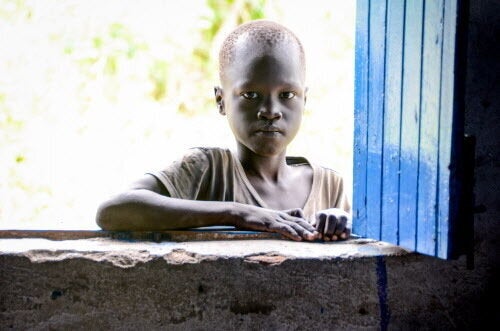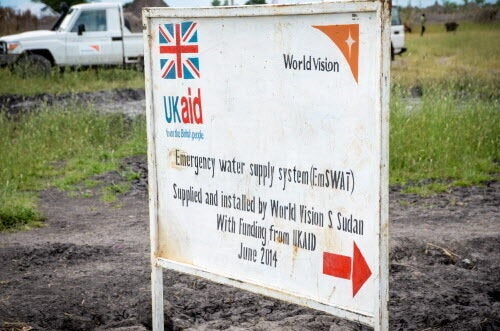In few places in the world can one week include both artillery fire and riding a speedboat down the Nile. South Sudan is one of those contrasts. The view is amazing - an enormous river, lined with greenery, very few buildings and exotic birds fly alongside the boat. There are no hotels, resorts or many people at all.
I am in the Upper Nile State of South Sudan. It's a beautiful part of the country. But while there is stunning wildlife in one direction, in the other is a camp hosting close to 20,000 people who fled violence that engulfed the area almost one year ago.
The river is not only beautiful, but is also a main transport route in a country where there are few efficient transport options. Getting across the country is a real challenge, to say the least.
My journey started with a 90min flight from Juba. Although there is a road, a volatile security situation makes it inadvisable to drive. The flights, operated by the UN, are expensive, but the fare is subsidised and they go to Malakal, the capital of Upper Nile, three times a week. Humanitarian agencies depend upon them to reach most of the country with staff and supplies.

[Child looks through school window, South Sudan. PHOTO/World Vision]
As I discovered the difficulty in accessing parts of the country means that conditions are basic at best. Aid workers often live in tents or prefabricated containers. For us it was a few days, but for others, they live like this for weeks or months. The challenging logistics, high costs and ongoing violent conflict make South Sudan one of the most difficult places in the world to work in. Yet a large number of aid agencies tolerate the conditions, bear the cost and manage the risk in order to serve the people here.
The motivation is an escalating food crisis and ongoing fighting. Close to four million people are in need of emergency assistance, with almost two million displaced. Needs for this year are estimated at $1.8 billion dollars, only 61 percent of which is funded. A massive response in 2014 helped stave off famine so far, but the outlook for 2015 is not good. Our departure from Malakal was delayed a few days due to fighting nearby. As we left, shelling in the distance indicated that more suffering is on the way for the South Sudanese and it will become even harder for humanitarians like us to reach those in need.

[PHOTO/World Vision]
Despite this, South Sudan is at risk of receiving less aid in 2015 than crises such as Iraq, Syria and Ebola, which receive far more media attention. Each person affected by these crises, deserves the support they need. Humanitarian agencies and donors are stretched thinly across a world of many tragedies, but we must find ways to help the most vulnerable of these people.
Children I met in South Sudan last week spoke of fear of violence and of being forgotten. As artillery strikes increase and food supplies decrease, we owe it to the children of South Sudan not to forget them, but to find them and help them regardless of where they live.
Even if that means going to the outskirts of nowhere in the middle of an armed conflict.
